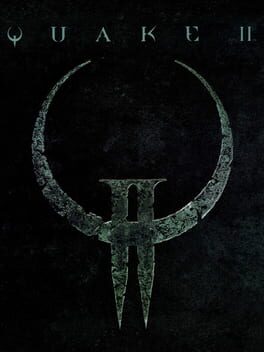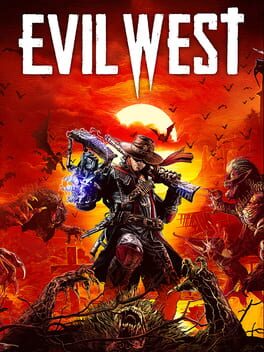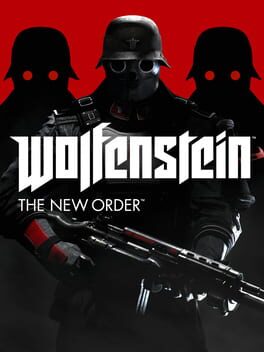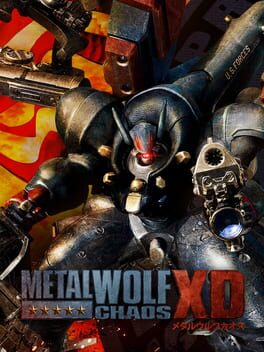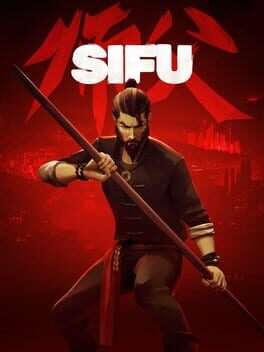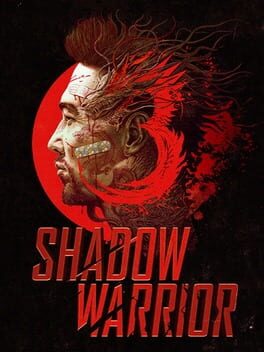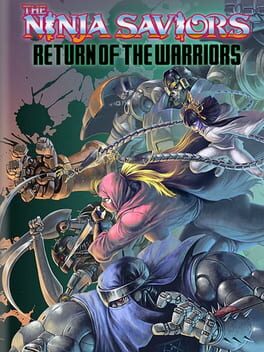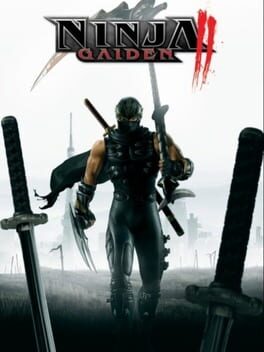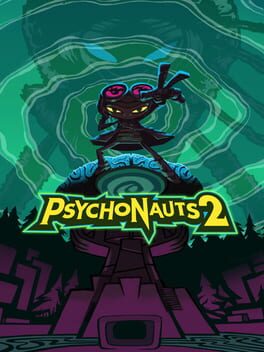12 reviews liked by nepu47
Quake II
2023
I should start by saying I have never played Quake II before and have no ties to that original release, so unfortunately much of the improvements or lack thereof are likely lost on me with this shiny new remaster from Nightdive.
I played and adored the remaster of Quake in 2021. A distinctly 90s package that managed to feel refreshing over 20 years later, offering an approach long abandoned by first person shooters. Now, 2 years later, Nightdive releases their overhaul of Quake II and it is magnificent. A more fast-paced, objective based run-and-gun that feels less scaffolded off it's predecessor and more like a new vision of Quake.
Gone are the dull-grey castle structures, knights in armor, Shamblers, and dark ambient tracks of NIN. There are minor 3D cutscenes and a narrative through-line as you blast your way across Strogg territory. It is up to you and you alone to strike at the heart of the alien enemy. The levels are more varied and larger, going between maps often to complete objectives. The levels transition between interiors and exteriors, always elegant and logical. I especially enjoyed the many skyboxes of the exterior environments. You will meet the sorry souls captured by the Strogg, watch them be decompressed or liquified by their machines. They cry with madness and pain until you either run past them or put them out of their misery. The narrative is simple and doesn't get in the way, but it makes you feel like you're fighting for something and that you've accomplished an important misson when reaching the finale.
The combat itself isn't all that different from Quake. You are given 8 different weapons ranging from your projectile-based pistol, to the BFG, and of course the super shotgun. The enemies are deadly, you can't stop moving or you're done for. I used the super shotty most of the time naturally, turning much of the enemies into bloody gibs every 1 to 3 shots. Some of the bigger bads can take up to 8 missiles. You'll do a lot of enemy managing, taking out the smaller targets first. Occasionally the enemies will friendly fire and they will turn on each other, giving you a temporary ally or distraction.
A fantastic game that looks incredible and has punchy, quick combat. The enemy designs are varied and nasty. All of the Strogg look like they need to be put in the dirt, miserable messes of flesh and steel. The Flyers in particular are an insane design. I can't wait to play all the other campaigns included, especially MachineGames inclusion CALL OF THE MACHINE. I loved their inclusion on the Quake remaster. They really push the engine into new and interesting territories, often appearing much more impressive than anything in the base game.
I played and adored the remaster of Quake in 2021. A distinctly 90s package that managed to feel refreshing over 20 years later, offering an approach long abandoned by first person shooters. Now, 2 years later, Nightdive releases their overhaul of Quake II and it is magnificent. A more fast-paced, objective based run-and-gun that feels less scaffolded off it's predecessor and more like a new vision of Quake.
Gone are the dull-grey castle structures, knights in armor, Shamblers, and dark ambient tracks of NIN. There are minor 3D cutscenes and a narrative through-line as you blast your way across Strogg territory. It is up to you and you alone to strike at the heart of the alien enemy. The levels are more varied and larger, going between maps often to complete objectives. The levels transition between interiors and exteriors, always elegant and logical. I especially enjoyed the many skyboxes of the exterior environments. You will meet the sorry souls captured by the Strogg, watch them be decompressed or liquified by their machines. They cry with madness and pain until you either run past them or put them out of their misery. The narrative is simple and doesn't get in the way, but it makes you feel like you're fighting for something and that you've accomplished an important misson when reaching the finale.
The combat itself isn't all that different from Quake. You are given 8 different weapons ranging from your projectile-based pistol, to the BFG, and of course the super shotgun. The enemies are deadly, you can't stop moving or you're done for. I used the super shotty most of the time naturally, turning much of the enemies into bloody gibs every 1 to 3 shots. Some of the bigger bads can take up to 8 missiles. You'll do a lot of enemy managing, taking out the smaller targets first. Occasionally the enemies will friendly fire and they will turn on each other, giving you a temporary ally or distraction.
A fantastic game that looks incredible and has punchy, quick combat. The enemy designs are varied and nasty. All of the Strogg look like they need to be put in the dirt, miserable messes of flesh and steel. The Flyers in particular are an insane design. I can't wait to play all the other campaigns included, especially MachineGames inclusion CALL OF THE MACHINE. I loved their inclusion on the Quake remaster. They really push the engine into new and interesting territories, often appearing much more impressive than anything in the base game.
Evil West
2022
Until the midpoint, it was one of my favoirte games I’ve played in this year, but it turned sour near the end. Here’s my explanation.
I played it on Hard difficulty from the start to finish. I dabbled into Evil difficulty with NG+ a bit. Didn’t finish that one, but I think my issue will be conveyed without fully playing that one.
What I really liked about the game is the initial attitude of the game; “We are not a typical cinematic game, and we are not gonna waste your time with walky-talky sections. Go and kill some hordes of enemies with these tools and keep moving on”. Within the first three stages, all the important melee/ranged options get opened such as melee juggling, ranged juggling, launcher, sniping, rapid pistol shot, long-distance pull, long-distance dash, parry, cancel kick, etc. These combat options are designed around the fact the player character’s movement is kinda clumsy so that you must actively make a safe space by actively demolishing the enemies with destructive combos. Fodders get easily stunned and electrocuted, and they turn into cannonballs when they get launched. Sniping the weak spot mostly guarantees heavy damage and stun, and a well-timed uppercut and cancel kick can cancel the incoming attack.
These overpowered options synergize with arena combats wonderfully. Since enemies are trying to surround and push you from everywhere, and there are frequent miniboss mix-ups in the later part of the game, you have to improvise the best combat methods that suit your situation every time. For example, when the fat giant type of miniboss shows up, pulling and cannonballing fodder enemies to the mini boss helps a lot. Also, you can zap the mini bosses if you punch them enough, so there’s an incentive to push more in the close distance. If the miniboss that got mixed is a flying type, maintaining your position to snipe the boss becomes the high priority, so you have to use more range-focused attacks to deal with the enemies. There’s a good sense of chaos control simulator in there, and when the game shows more and more ridiculous combat settings (such as fighting 3 giant bats and fodders at the final arena), the game shines brilliantly. I would say, the best moment of the game reminds me some of God Hand combat, even though this game has fewer options than that game.
However, the game really suffers from the technical department. And I’m not talking about graphical fidelity. For that size of a game dev company, the game looks great on its own with its gritty western vibe. One of the big problems is that while the control works fluently 98% of time, in the other 2%, it takes a nosedive and turns into an uncontrollable mess. And that aspect is worsened by the fact that the game is built around context-sensitive moveset and janky-ass collisions. To properly launch an enemy to a target, the target should be in the player’s frontal viewpoint while the character model is directly standing in front of the target in the distance. The same goes for the zapper-related moves. If you want to zap-pull or zap-dash to the enemy, the enemy should be in your sight, and in the right distance. There are some UI elements that try to remove the guess works -such as the glowing circle or the zapper target mark-, but when the arena becomes chaos, not only relying on UI is not viable, but the target priority becomes tangled, and you start to accidentally pull wrong things or launch wrong enemies to wrong targets. Not only that, if the context-sensitive movement failed to register, your input will start the “wrong movement” which will make the player vulnerable for short time. This doesn’t seem like an issue in the early-to-mid part of the game, but as the enemies become deadlier and overcrowded, you will see why it can lead to frustrating moments.
Other context-sensitive moveset-related issues can be found in the zapping mechanic. Happened only a few times in the game, but worth mentioning. When the enemy is zapped, and you are right in front of them, your main melee attack input will start the E-combo punch attack that works like grab attacks. And E-combo makes enemies attack less frequently, which means not only it’s a combo method, but it is also a useful breathing room maker too. Most of the time, it works well with the player’s intention, but when the arena gets uneven, and cramped, and the enemies are too many, the colliders become messy…and you know what it leads to. It may start the normal punch combo when I want to start the E-combo or vice versa. One time, I successfully electrocute the miniboss and then I dashed to the target, but my character model got stuck between the boss’s back and the wall behind the boss. But still, I was still contacting the miniboss and if my E-Combo somehow registered in this situation, I would have survived since it would automatically positioned me in front of the miniboss. But my attempt to punish the miniboss with E-combo didn’t get registered and I died by getting slashed by fodders and the miniboss who just got rid of the status effect. It was so frustrating.
Don’t get me wrong, a lot of games can have issues with context-sensitive movements, since colliders are tricky bastards in game development. Bloodborne’s viscera attack and Doom Eternal’s Blood punch mechanic come to my mind. But my gripe is, the game is designed in a way that makes players dive into groups of enemies and that’s often the most enjoyable way to play. And sadly, it is also the method that makes players deal with the buggy colliders and combo movements. Maybe, if there were better ways to see the “grander picture” of the arena fight, I would have also found the fun in predicting the enemy behaviors, planning, positioning, and proceeding with the attack in a careful manner. Sadly, the camera is also too janky to provide the “grander picture”.
The good thing about this game is that enemy magnetism is not as harsh as Sifu or GoW reboot, fitting to the character’s close-up over-the-shoulder camera. But that doesn’t mean the camera is clean from issues. I think there are some AI features that reduce the attack patterns when they are behind the player’s back, but the unfair offscreen attacks are still frequent. Of course, the close-up camera doesn’t really help in that situation. Also, the camera refuses to work properly when there’s a wall behind the player -my least favorite aspect of the typical over-the-shoulder-view action games-. Getting stuck in the corner by two mini bosses was surely an experience. Some terrains prevent the players from doing the dodge-roll, but thanks to the default camera angle, players can’t see the feet, which caused a lot of death by getting stuck in the small pebble in the road that I couldn’t see. And don’t mention how atrocious can the camera be in some main boss fights.
I don’t know if the issues related to the main bosses stem purely from the technical problem or the design decision, but I have to say, there are many issues. The Parasiter is bad. Normally there aren’t many good static structure bosses in action games in general, but this one is even more frustrating, thanks to the weird lock-on feature that wires the player input in an unintuitive way. Bruch and the third main boss were mostly enjoyable, but the camera didn’t help when there are multiple targets to snipe quickly as possible. Also, I thought the feedbacks for player melee attacks were not that great, considering that all the bipedal minibosses show some flinch when they get hit by the player’s uppercut, no matter how tanky they look. The final boss worked in a similar fashion (with really good animation btw), but the final third phase was not great both on the technical and design sides. The third phase is the sized-up version of the first & second phase entity, but for some reason, your melee attack refuses to register, and you get blocked by an invisible capsule preventing the players to go underneath the body. In this situation, you are forced to use ranged options and contextual punish moves. What a great way to end the game built upon varied combat maneuvers and mostly consistent player interaction, isn’t it? And don’t forget the camera issue, as it gets worse and worse when the boss’s size grows up.
Also, here are some more things to add. Even if every control worked in the way I intended, the camera didn’t have issues, and the bosses were buttery smooth, there are some fundamental design decisions that baffled me. While there are SOME elements that break the flow of constant combat scenarios (such as the mine cart roller coaster sections and the puzzle sections), Fundamentally, the game is extremely repetitive. Now, this is a bit contradictory to what I’ve said before, but the point is different. I enjoyed the improvisational chaotic decision-making in the combat loop, but the combat loop is, still, the loop. If a player finds the most effective solution for certain chess pieces, then it becomes a habit. And a habit is anti-dynamism if you know what I mean. Unless they introduce the absurd difficulty spike (like the 3-bats battle I mentioned), or introduce the chess pieces in a different context, the combat situations will get stale.
While there are varied enemies with different moveset and different weak points, the arena’s context blends together way too much. When the arenas are mostly just the flat grounds with TNT boxes here and there, then the whole massive train cargo, oil rig, mines, vampire cavern, and swamp themes are losing their value as distinguishable stage settings, which must have taken a lot of effort to visualize. I’m not saying that this game should be the next coming of The Wonderful 101, but some elements could have been mixed as the arena gimmicks to make the combat situations more distinguishable and memorable. The sinking swamp tiles that made you keep moving in the puzzle section could have been used in certain arenas. They could have introduced an interactable mine cart that you can kick to turn it into a moving cannon ball on a rail. Sifu also proved that even if the character is mostly stuck to the ground, as long as there’s gravity working on the map, you can turn the whole level into your weapon, like throwing the enemy off the stairs or ledges. And in Evil West, you already can launch enemies off the cliff! This means by adding some layers to the arena, the game could have been more dynamic than what we have right now.
But even then, I’m kinda hesitant to call the game devs were not even trying to break the mold because I’m also facing a similar dilemma as a game dev who is developing an action game consisting of constant arenas. As you develop the enemy behaviors, you will realize that just a tiny bit of obstacles in an arena can make a lot of unintended noises. Maybe the flattened arena with no obstacles in the middle is the best for both players and enemies who are already facing numerous issues with the colliders. Maybe they tried to add the dynamic elements at the end of the dev cycle, but the time ran out, so they released it as it is. Whatever the reason is, I think they knew what they were doing. And my trust in the dev team’s future project is high. The fundamental of Evil West still reminds me of the golden era of PS2 action game titles, and they have balls to put bazillions of enemies in an arena even if they can cause a technical issue, just for sake of the dynamic play. I have no intention to play the game again since I think I’ve seen enough, but I hope their spirit carries on to more double-A game studios.
I played it on Hard difficulty from the start to finish. I dabbled into Evil difficulty with NG+ a bit. Didn’t finish that one, but I think my issue will be conveyed without fully playing that one.
What I really liked about the game is the initial attitude of the game; “We are not a typical cinematic game, and we are not gonna waste your time with walky-talky sections. Go and kill some hordes of enemies with these tools and keep moving on”. Within the first three stages, all the important melee/ranged options get opened such as melee juggling, ranged juggling, launcher, sniping, rapid pistol shot, long-distance pull, long-distance dash, parry, cancel kick, etc. These combat options are designed around the fact the player character’s movement is kinda clumsy so that you must actively make a safe space by actively demolishing the enemies with destructive combos. Fodders get easily stunned and electrocuted, and they turn into cannonballs when they get launched. Sniping the weak spot mostly guarantees heavy damage and stun, and a well-timed uppercut and cancel kick can cancel the incoming attack.
These overpowered options synergize with arena combats wonderfully. Since enemies are trying to surround and push you from everywhere, and there are frequent miniboss mix-ups in the later part of the game, you have to improvise the best combat methods that suit your situation every time. For example, when the fat giant type of miniboss shows up, pulling and cannonballing fodder enemies to the mini boss helps a lot. Also, you can zap the mini bosses if you punch them enough, so there’s an incentive to push more in the close distance. If the miniboss that got mixed is a flying type, maintaining your position to snipe the boss becomes the high priority, so you have to use more range-focused attacks to deal with the enemies. There’s a good sense of chaos control simulator in there, and when the game shows more and more ridiculous combat settings (such as fighting 3 giant bats and fodders at the final arena), the game shines brilliantly. I would say, the best moment of the game reminds me some of God Hand combat, even though this game has fewer options than that game.
However, the game really suffers from the technical department. And I’m not talking about graphical fidelity. For that size of a game dev company, the game looks great on its own with its gritty western vibe. One of the big problems is that while the control works fluently 98% of time, in the other 2%, it takes a nosedive and turns into an uncontrollable mess. And that aspect is worsened by the fact that the game is built around context-sensitive moveset and janky-ass collisions. To properly launch an enemy to a target, the target should be in the player’s frontal viewpoint while the character model is directly standing in front of the target in the distance. The same goes for the zapper-related moves. If you want to zap-pull or zap-dash to the enemy, the enemy should be in your sight, and in the right distance. There are some UI elements that try to remove the guess works -such as the glowing circle or the zapper target mark-, but when the arena becomes chaos, not only relying on UI is not viable, but the target priority becomes tangled, and you start to accidentally pull wrong things or launch wrong enemies to wrong targets. Not only that, if the context-sensitive movement failed to register, your input will start the “wrong movement” which will make the player vulnerable for short time. This doesn’t seem like an issue in the early-to-mid part of the game, but as the enemies become deadlier and overcrowded, you will see why it can lead to frustrating moments.
Other context-sensitive moveset-related issues can be found in the zapping mechanic. Happened only a few times in the game, but worth mentioning. When the enemy is zapped, and you are right in front of them, your main melee attack input will start the E-combo punch attack that works like grab attacks. And E-combo makes enemies attack less frequently, which means not only it’s a combo method, but it is also a useful breathing room maker too. Most of the time, it works well with the player’s intention, but when the arena gets uneven, and cramped, and the enemies are too many, the colliders become messy…and you know what it leads to. It may start the normal punch combo when I want to start the E-combo or vice versa. One time, I successfully electrocute the miniboss and then I dashed to the target, but my character model got stuck between the boss’s back and the wall behind the boss. But still, I was still contacting the miniboss and if my E-Combo somehow registered in this situation, I would have survived since it would automatically positioned me in front of the miniboss. But my attempt to punish the miniboss with E-combo didn’t get registered and I died by getting slashed by fodders and the miniboss who just got rid of the status effect. It was so frustrating.
Don’t get me wrong, a lot of games can have issues with context-sensitive movements, since colliders are tricky bastards in game development. Bloodborne’s viscera attack and Doom Eternal’s Blood punch mechanic come to my mind. But my gripe is, the game is designed in a way that makes players dive into groups of enemies and that’s often the most enjoyable way to play. And sadly, it is also the method that makes players deal with the buggy colliders and combo movements. Maybe, if there were better ways to see the “grander picture” of the arena fight, I would have also found the fun in predicting the enemy behaviors, planning, positioning, and proceeding with the attack in a careful manner. Sadly, the camera is also too janky to provide the “grander picture”.
The good thing about this game is that enemy magnetism is not as harsh as Sifu or GoW reboot, fitting to the character’s close-up over-the-shoulder camera. But that doesn’t mean the camera is clean from issues. I think there are some AI features that reduce the attack patterns when they are behind the player’s back, but the unfair offscreen attacks are still frequent. Of course, the close-up camera doesn’t really help in that situation. Also, the camera refuses to work properly when there’s a wall behind the player -my least favorite aspect of the typical over-the-shoulder-view action games-. Getting stuck in the corner by two mini bosses was surely an experience. Some terrains prevent the players from doing the dodge-roll, but thanks to the default camera angle, players can’t see the feet, which caused a lot of death by getting stuck in the small pebble in the road that I couldn’t see. And don’t mention how atrocious can the camera be in some main boss fights.
I don’t know if the issues related to the main bosses stem purely from the technical problem or the design decision, but I have to say, there are many issues. The Parasiter is bad. Normally there aren’t many good static structure bosses in action games in general, but this one is even more frustrating, thanks to the weird lock-on feature that wires the player input in an unintuitive way. Bruch and the third main boss were mostly enjoyable, but the camera didn’t help when there are multiple targets to snipe quickly as possible. Also, I thought the feedbacks for player melee attacks were not that great, considering that all the bipedal minibosses show some flinch when they get hit by the player’s uppercut, no matter how tanky they look. The final boss worked in a similar fashion (with really good animation btw), but the final third phase was not great both on the technical and design sides. The third phase is the sized-up version of the first & second phase entity, but for some reason, your melee attack refuses to register, and you get blocked by an invisible capsule preventing the players to go underneath the body. In this situation, you are forced to use ranged options and contextual punish moves. What a great way to end the game built upon varied combat maneuvers and mostly consistent player interaction, isn’t it? And don’t forget the camera issue, as it gets worse and worse when the boss’s size grows up.
Also, here are some more things to add. Even if every control worked in the way I intended, the camera didn’t have issues, and the bosses were buttery smooth, there are some fundamental design decisions that baffled me. While there are SOME elements that break the flow of constant combat scenarios (such as the mine cart roller coaster sections and the puzzle sections), Fundamentally, the game is extremely repetitive. Now, this is a bit contradictory to what I’ve said before, but the point is different. I enjoyed the improvisational chaotic decision-making in the combat loop, but the combat loop is, still, the loop. If a player finds the most effective solution for certain chess pieces, then it becomes a habit. And a habit is anti-dynamism if you know what I mean. Unless they introduce the absurd difficulty spike (like the 3-bats battle I mentioned), or introduce the chess pieces in a different context, the combat situations will get stale.
While there are varied enemies with different moveset and different weak points, the arena’s context blends together way too much. When the arenas are mostly just the flat grounds with TNT boxes here and there, then the whole massive train cargo, oil rig, mines, vampire cavern, and swamp themes are losing their value as distinguishable stage settings, which must have taken a lot of effort to visualize. I’m not saying that this game should be the next coming of The Wonderful 101, but some elements could have been mixed as the arena gimmicks to make the combat situations more distinguishable and memorable. The sinking swamp tiles that made you keep moving in the puzzle section could have been used in certain arenas. They could have introduced an interactable mine cart that you can kick to turn it into a moving cannon ball on a rail. Sifu also proved that even if the character is mostly stuck to the ground, as long as there’s gravity working on the map, you can turn the whole level into your weapon, like throwing the enemy off the stairs or ledges. And in Evil West, you already can launch enemies off the cliff! This means by adding some layers to the arena, the game could have been more dynamic than what we have right now.
But even then, I’m kinda hesitant to call the game devs were not even trying to break the mold because I’m also facing a similar dilemma as a game dev who is developing an action game consisting of constant arenas. As you develop the enemy behaviors, you will realize that just a tiny bit of obstacles in an arena can make a lot of unintended noises. Maybe the flattened arena with no obstacles in the middle is the best for both players and enemies who are already facing numerous issues with the colliders. Maybe they tried to add the dynamic elements at the end of the dev cycle, but the time ran out, so they released it as it is. Whatever the reason is, I think they knew what they were doing. And my trust in the dev team’s future project is high. The fundamental of Evil West still reminds me of the golden era of PS2 action game titles, and they have balls to put bazillions of enemies in an arena even if they can cause a technical issue, just for sake of the dynamic play. I have no intention to play the game again since I think I’ve seen enough, but I hope their spirit carries on to more double-A game studios.
Idk, I was on board with the "Killing Nazis with Moonrakers on the Moon base" and the "underwater Indiana Jones temples" and whatnot but they really lost me with the "Fire Trooper guys that can withstand 10+ shotgun blasts to the head from point blank range on Normal difficulty" part. Better luck next time, lads.
Metal Wolf Chaos XD
2019
Sifu
2022
[Pros]
-Aside from the slow intro, the game has no downtime. It surely is action-packed.
-The continue system of this game is not only conceptually intriguing but also shows the evolution of arcade games' continue system. It makes people WANT to master the older levels, but with their own phase.
-defensive options(dash, block, perfect parry, weaving&short-jumping) are varied and each has its own clear merits.
-perfect parry has a really short window, which means it's not easy to always rely on it. It also means that people won't likely go with one single method to deal with every problem.
-Environmental hazards (fall-death, stair-fall, wall-crash, throwable objects) are the true king of the grand game design. Every countermeasure and combo you will make is chosen, or amplified by these objects. You can engage in the fight against defensive enemies by kicking the bottle or chair to destroy their position and punish. You can throw the enemy off the ledge or stair by using throwing and sweep attacks. Since there are a lot of dangerous enemies coming toward you at the near-end level, this environment manipulation becomes the main ammunition of your gun. And I really love the chaotic situation I can pull off with that.
-Healing system is simple but very fitting to this game.
-There's a hidden spare-the-boss mechanic in this game, which is kinda gimmicky, but it also makes you have an additional goal that changes your strat. (you have to destroy their structure twice in their second phase before their health goes down to 0) Pretty neat I should say.
-Not related to the mechanics, but the third and fourth levels are truly eye-festival. The art direction is fantastic.
[Middle ground]
-Yes, this game's combat system is entirely built upon automatic move assists like gliding enemies and kinda inconsistent tracking speed, but most of the time they can be negated by good positioning. I wish the vertical attacks didn't track the players tho.
-There aren't many enemy types, but the normal goons themselves can change their attack patterns by holding the weapons lying around(I know it's a classic AI behavior that has been made since the older beat-em-up games, but it's still fantastic), and some random super-saiyan mode can stir the arena in a fun way. (Imagine the devil transformation from God Hand, but much more lenient) So, yeah, even with the low amount of enemy variety, the arenas are pretty dynamic. Though I wish there were more champion enemy types.
-Bosses are pattern-heavy and very punishing when we interrupt their combo(which is why they seem kinda restrictive), but the defensive options and countermeasures alone can make some variations in the gameplay. For example, It is possible to destroy the structure meter of Botanist's 1st phase with the weave-punch-wall-throw combo since there are many walls in the boss arena. Surprisingly not many people didn't use that. Also, many people consider that the third boss is meant to be played with the waiting-game strat, but I realized that the structure damage she gives is quite low, so I dealt with the first phase with full-on perfect parry strat which is quite similar to Sekiro. I think some people can deal with her with constant weaving&short-jumping, which is kinda impressive in a sense. What I'm saying is, the bosses are not that DEEP in the whole action game spectrum, but they surely accept different playstyles.
[Cons]
-I think some enemy attack patterns are frustrating to deal with because of the lack of telegraphs. Note that I'm not a Fighting Game enthusiast tho.
-Yeah it is realistic that punching people irl doesn't make a bomb sound, but even considering that, the sound feedback should have been more explosive.
-The Second Boss is unnecessarily punishing considering that he is still an early game boss and the patterns themselves are quite simple.
-Honestly, The skill tree exists for the skill tree's sake. all the combat moves should have been opened from the start and only non-permanent-stat-boost from the dragon statue should have remained in this game.
-Camera collides with the wall, which can lead to some unmanageable stuff like the things in God of War Reboot.
-I hated the final boss for being too fast and hard-hitting while also providing only a small amount of window for us to express the offensive moves.
Overall, I can give this at least 4/5 for the pure enjoyment I got from this game. But I have to say, I could have loved it even more if they fixed the Cons.
-Aside from the slow intro, the game has no downtime. It surely is action-packed.
-The continue system of this game is not only conceptually intriguing but also shows the evolution of arcade games' continue system. It makes people WANT to master the older levels, but with their own phase.
-defensive options(dash, block, perfect parry, weaving&short-jumping) are varied and each has its own clear merits.
-perfect parry has a really short window, which means it's not easy to always rely on it. It also means that people won't likely go with one single method to deal with every problem.
-Environmental hazards (fall-death, stair-fall, wall-crash, throwable objects) are the true king of the grand game design. Every countermeasure and combo you will make is chosen, or amplified by these objects. You can engage in the fight against defensive enemies by kicking the bottle or chair to destroy their position and punish. You can throw the enemy off the ledge or stair by using throwing and sweep attacks. Since there are a lot of dangerous enemies coming toward you at the near-end level, this environment manipulation becomes the main ammunition of your gun. And I really love the chaotic situation I can pull off with that.
-Healing system is simple but very fitting to this game.
-There's a hidden spare-the-boss mechanic in this game, which is kinda gimmicky, but it also makes you have an additional goal that changes your strat. (you have to destroy their structure twice in their second phase before their health goes down to 0) Pretty neat I should say.
-Not related to the mechanics, but the third and fourth levels are truly eye-festival. The art direction is fantastic.
[Middle ground]
-Yes, this game's combat system is entirely built upon automatic move assists like gliding enemies and kinda inconsistent tracking speed, but most of the time they can be negated by good positioning. I wish the vertical attacks didn't track the players tho.
-There aren't many enemy types, but the normal goons themselves can change their attack patterns by holding the weapons lying around(I know it's a classic AI behavior that has been made since the older beat-em-up games, but it's still fantastic), and some random super-saiyan mode can stir the arena in a fun way. (Imagine the devil transformation from God Hand, but much more lenient) So, yeah, even with the low amount of enemy variety, the arenas are pretty dynamic. Though I wish there were more champion enemy types.
-Bosses are pattern-heavy and very punishing when we interrupt their combo(which is why they seem kinda restrictive), but the defensive options and countermeasures alone can make some variations in the gameplay. For example, It is possible to destroy the structure meter of Botanist's 1st phase with the weave-punch-wall-throw combo since there are many walls in the boss arena. Surprisingly not many people didn't use that. Also, many people consider that the third boss is meant to be played with the waiting-game strat, but I realized that the structure damage she gives is quite low, so I dealt with the first phase with full-on perfect parry strat which is quite similar to Sekiro. I think some people can deal with her with constant weaving&short-jumping, which is kinda impressive in a sense. What I'm saying is, the bosses are not that DEEP in the whole action game spectrum, but they surely accept different playstyles.
[Cons]
-I think some enemy attack patterns are frustrating to deal with because of the lack of telegraphs. Note that I'm not a Fighting Game enthusiast tho.
-Yeah it is realistic that punching people irl doesn't make a bomb sound, but even considering that, the sound feedback should have been more explosive.
-The Second Boss is unnecessarily punishing considering that he is still an early game boss and the patterns themselves are quite simple.
-Honestly, The skill tree exists for the skill tree's sake. all the combat moves should have been opened from the start and only non-permanent-stat-boost from the dragon statue should have remained in this game.
-Camera collides with the wall, which can lead to some unmanageable stuff like the things in God of War Reboot.
-I hated the final boss for being too fast and hard-hitting while also providing only a small amount of window for us to express the offensive moves.
Overall, I can give this at least 4/5 for the pure enjoyment I got from this game. But I have to say, I could have loved it even more if they fixed the Cons.
Shadow Warrior 3
2022
After the bloated equipment arsenal and color rarity systems of Shadow Warrior 2, the third entry in this franchise comes in fast, with an incredibly short runtime, simple and speedy combat mechanics, and a somewhat self-contained narrative that make it a pretty good time (as long as you can get through the choppy humor).
Comparisons to Doom Eternal are inevitable, with the base gameplay loop requiring players to swap weapons often and use "finishers" to get resources from enemies. But where it stands out is its gore weapon system. When you execute an enemy, you get a limited-time weapon that mirrors their attack powers, allowing you to go on a rampage through the crowded arenas. Combine this feature with environmental kills, and wall-run mechanics reminiscent of Titanfall 2 with a bit more float and you have the general idea.
If you liked the series first entry (the 2013 reboot of the franchise) then you'll likely love this one. And if you enjoy movement based shooters like Doom Eternal and Titanfall 2 you'll likely have fun using this game as a diversion. Overall I can safely recommend it to most, just bring a mouth guard so you don't grit your teeth after the eightieth Wang joke...
Comparisons to Doom Eternal are inevitable, with the base gameplay loop requiring players to swap weapons often and use "finishers" to get resources from enemies. But where it stands out is its gore weapon system. When you execute an enemy, you get a limited-time weapon that mirrors their attack powers, allowing you to go on a rampage through the crowded arenas. Combine this feature with environmental kills, and wall-run mechanics reminiscent of Titanfall 2 with a bit more float and you have the general idea.
If you liked the series first entry (the 2013 reboot of the franchise) then you'll likely love this one. And if you enjoy movement based shooters like Doom Eternal and Titanfall 2 you'll likely have fun using this game as a diversion. Overall I can safely recommend it to most, just bring a mouth guard so you don't grit your teeth after the eightieth Wang joke...
Ninja Gaiden II
2008
For better or for worse there is no other game like Ninja Gaiden 2. Tomonobu Itagaki, the game director,is famous for being kinda of a rockstar, doing what he thinks is cool even going against standard convetions to create games that are challenging and are not afraid to punish the player hubris.
This game is Itagaki at its most pure.
Incredibly fast paced with hordes of incredibly aggressive enemies that never give you time to breath.
Section with respawning soldier that shower you with rockets just like in a NES games and arenas full of neverending ninjas.
If you want to survive you'll need to be even more aggressive and master the combat system, knowing when to chain iframes to maintain your offense, when to use special execution, called Obliteration Techniques, to kill your foes fast and efficiently.
Itakagi at its finest is not always a good thing tho. Glitches and input drops are frequent, some section, enemies and bosses are infuriating and the game is not afraid to be a bit unfair at times and push you to your limits. And yet all of this flaws don't manage to bring the fantastic combat down.
Nothing will ever top the level of adrenaline that fighting hordes of Ninja that pelt you with incendiary shuriken all while you are trying to kill Fiend Mages and Archers that try to shoot you down. Dying and trying again until you finally manage to "die slower than you enemies" and survive to be ready to do it all again in the next fight.
This game is Itagaki at its most pure.
Incredibly fast paced with hordes of incredibly aggressive enemies that never give you time to breath.
Section with respawning soldier that shower you with rockets just like in a NES games and arenas full of neverending ninjas.
If you want to survive you'll need to be even more aggressive and master the combat system, knowing when to chain iframes to maintain your offense, when to use special execution, called Obliteration Techniques, to kill your foes fast and efficiently.
Itakagi at its finest is not always a good thing tho. Glitches and input drops are frequent, some section, enemies and bosses are infuriating and the game is not afraid to be a bit unfair at times and push you to your limits. And yet all of this flaws don't manage to bring the fantastic combat down.
Nothing will ever top the level of adrenaline that fighting hordes of Ninja that pelt you with incendiary shuriken all while you are trying to kill Fiend Mages and Archers that try to shoot you down. Dying and trying again until you finally manage to "die slower than you enemies" and survive to be ready to do it all again in the next fight.

